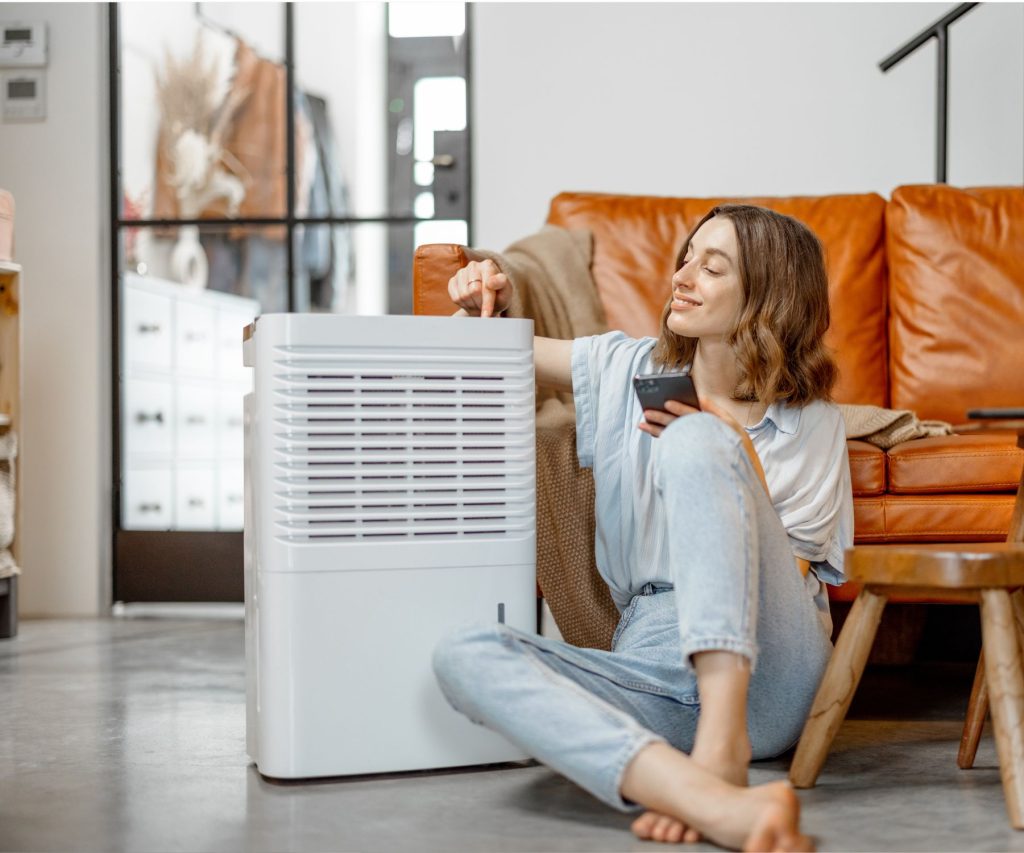Table of Contents
How Does a Dehumidifier Work in a Basement?
A dehumidifier is an essential appliance for controlling moisture levels in damp basements. Here’s how a dehumidifier works to reduce humidity and prevent mold growth in basement spaces:
The Refrigeration Process
A dehumidifier works by pulling moist air over a set of cold coils, which causes the moisture to condense and drip into a collection tank. The refrigeration process works like this:
- A fan pulls air from the room over a set of cold evaporator coils, which are part of a sealed refrigeration system.
- When the warm, moist air contacts the cold coils, the moisture condenses and drips into a collection tank.
- The now dehumidified air is reheated and circulated back into the room, while the water collects in the tank for easy disposal.
How Moisture is Removed
The key to a dehumidifier’s operation is cooling the air below its dew point. Here’s a more in-depth look at the dehumidification process:
- Air contains water vapor which exerts a pressure called vapor pressure. The more water vapor, the higher the vapor pressure.
- When air is cooled, its capacity to hold water vapor decreases. The temperature at which condensation occurs is called the dew point.
- By cooling air below its dew point, water vapor condenses from the air onto the cold coils as liquid water.
- This lowering of vapor pressure reduces the relative humidity of the air.
 Dehumidifier Capacity
Dehumidifier Capacity
Dehumidifier capacity refers to the amount of moisture it can remove from the air in a given period, usually measured in pints per day. Capacity depends on:
- Coil surface area – More coil surface area allows more moisture condensation.
- Airflow rate – More airflow exposes more air to the coils.
- Basement size – Required capacity increases with basement square footage.
- Outside air humidity – More moisture in the air requires more dehumidification.
Choosing a model with suitable capacity for your basement’s conditions is key to effectively controlling humidity.
Maintenance Tips
To keep a basement dehumidifier operating at peak efficiency:
- Frequently empty the collection tank and clean any filters.
- Clean dust and debris from the coils with a brush or vacuum.
- Make sure the air intake and exhaust are clear of obstructions.
- Have the refrigerant charge checked by an HVAC technician annually.
Proper dehumidifier maintenance helps ensure moisture levels are properly controlled and basements remain dry and comfortable.
FAQ
What size dehumidifier do I need for my basement?
Choose a dehumidifier that can extract at least 10-12 pints of water per 1000 square feet of basement space. Larger capacity is better for very damp basements.
Where should the dehumidifier be placed?
Place the dehumidifier in the dampest part of the basement, at least 6-8 inches from walls. Make sure it has room for air intake and is level for proper drainage.
How do I drain a dehumidifier automatically?
Use a condensate pump or gravity drain kit to automatically drain the dehumidifier into a sink or floor drain rather than emptying the tank.
What humidity level should my basement be?
Ideal humidity range for basements is around 45-50%. Higher than 60% can cause mold/mildew growth.
How much electricity does a basement dehumidifier use?
A typical 50-pint dehumidifier uses around 350-500 watts. Running it 24/7 costs $30-40 per month depending on electricity rates.
What’s the difference between a compressor and desiccant dehumidifier?
Compressor models remove moisture using cold coils. Desiccant types use material that adsorbs water vapor from the air.
Should I get a smart dehumidifier for my basement?
Smart dehumidifiers with humidistats and app controls maintain ideal humidity automatically. They prevent over-drying and save energy.
In Summary
Dehumidifiers control humidity in damp basements by condensing water vapor from the air as it passes over chilled coils. Proper sizing, placement, maintenance and settings optimize the ability to prevent mold and mildew growth. Smart humidistat controls provide added convenience and efficiency. When shopping for a dehumidifier, be sure to consider your specific basement conditions and moisture issues.
For more information, check out this useful resource from the Environmental Protection Agency: How to Control Moisture in Your Home

